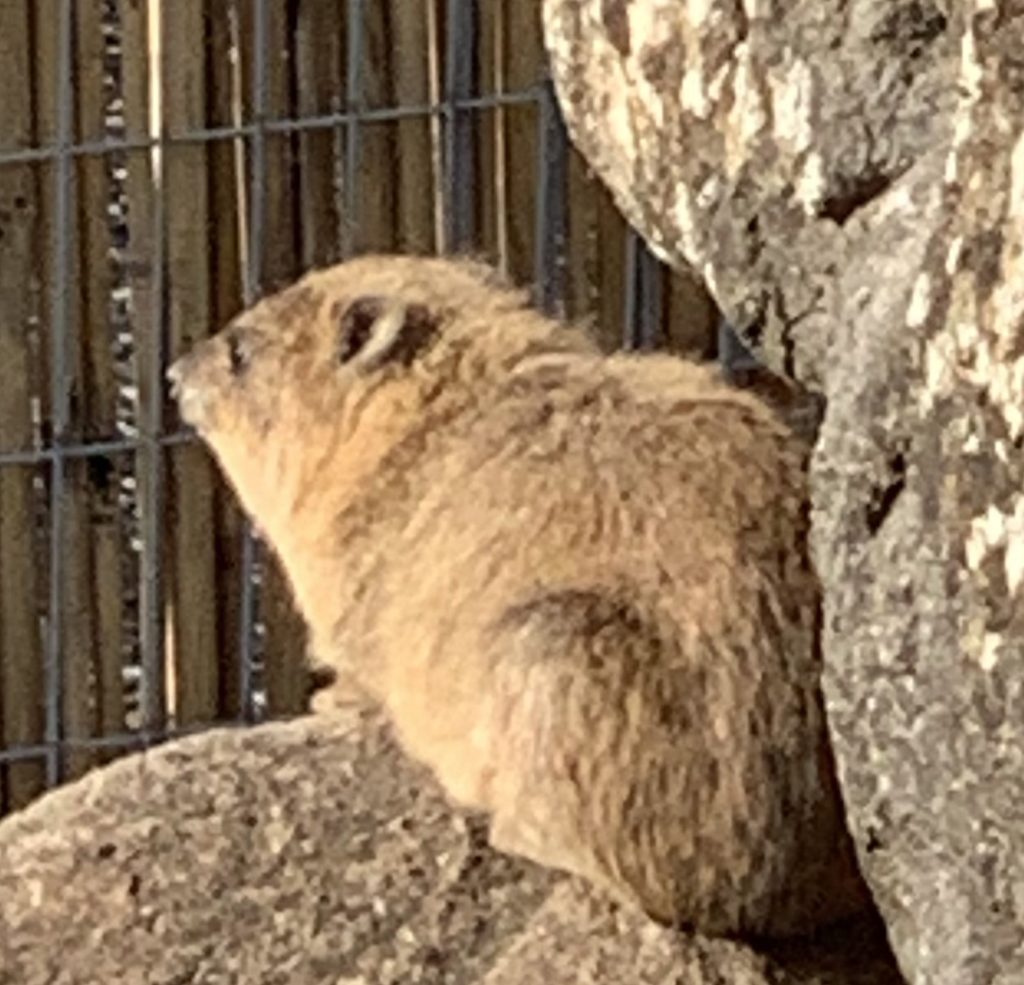Chorazin
Jerome Murphy-O’Connor refers to Chorazin as “Capernaum with a view.”[1] The city sat about two miles north of Capernaum at a site known as Khirbet Karazeh (or, Karraza), with which C. W. M. Van de Velde identified Chorazin (Korazim) in the 1850s. Here lie the remains of another synagogue with ties to the time of Jesus and His ministry in Galilee. Visitors to the site will find themselves entertained by a number of rock hyrax (Procavia capensis syriacus) living around the ancient ruins (see photo at head of this post).
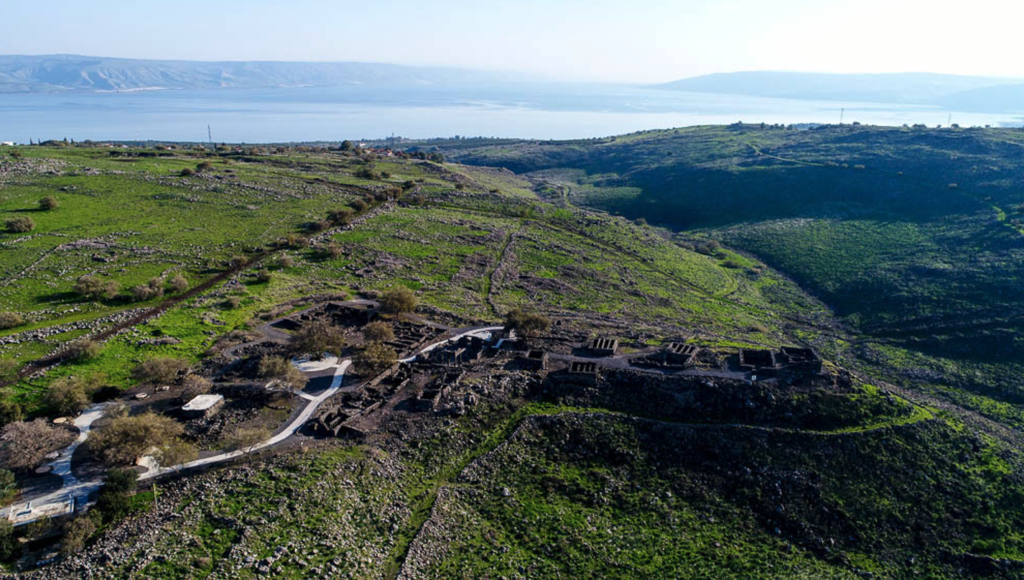
Biblical Notes
In the only two mentions of Chorazin in the New Testament Jesus condemns the inhabitants’ lack of faith (along with Capernaum and Bethsaida, Matthew 11:20–24 and Luke 10:13–16). None of these three sites currently have a town built atop their ruins — perhaps an enduring testimony to the curse Jesus pronounced upon them.
Historical Notes
As a result of the rebellion of Bar Kokhba (the Third Jewish Revolt, A.D. 132–135) the city gained some prominence during the 2nd century. Chorazin lay in ruins by the time of Eusebius (bishop of Caesarea ca. AD 314). The cause of its demise remains unknown. Jews rebuilt the city in the 4th century AD and, according to the Talmud, it became known for its production of wheat (b. Menah. 85a). The ruins of a Medieval (12th–14th centuries) house provides evidence of some sort of renewed occupation of the site. The house contains arches of basalt supporting the ceiling.
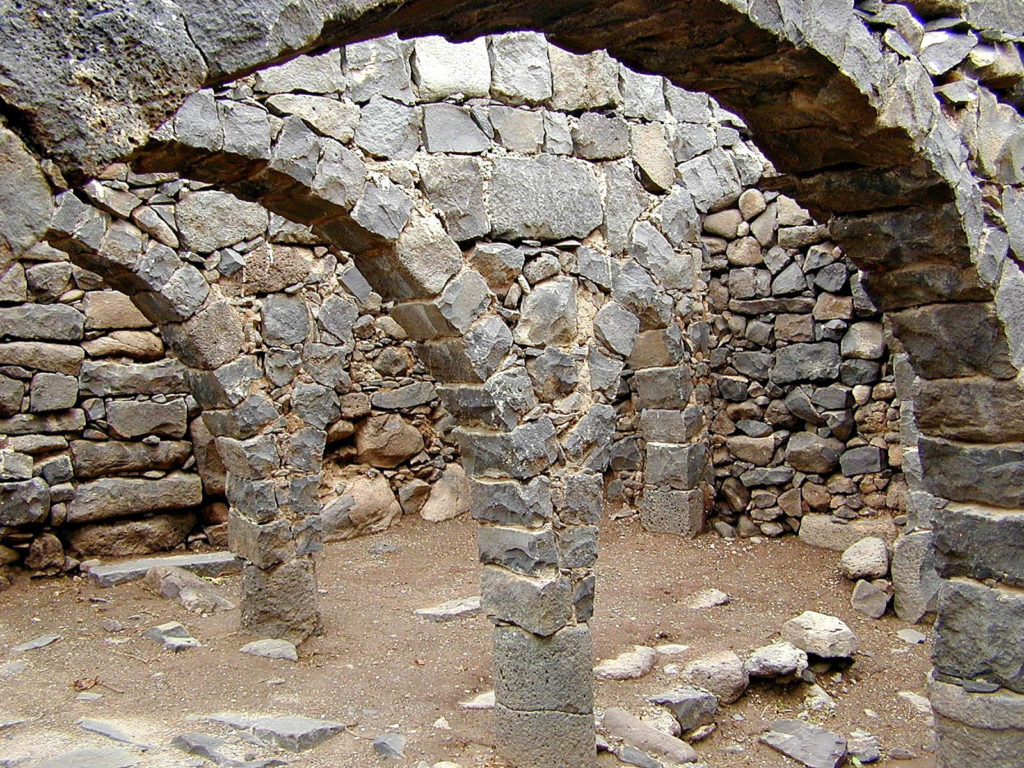
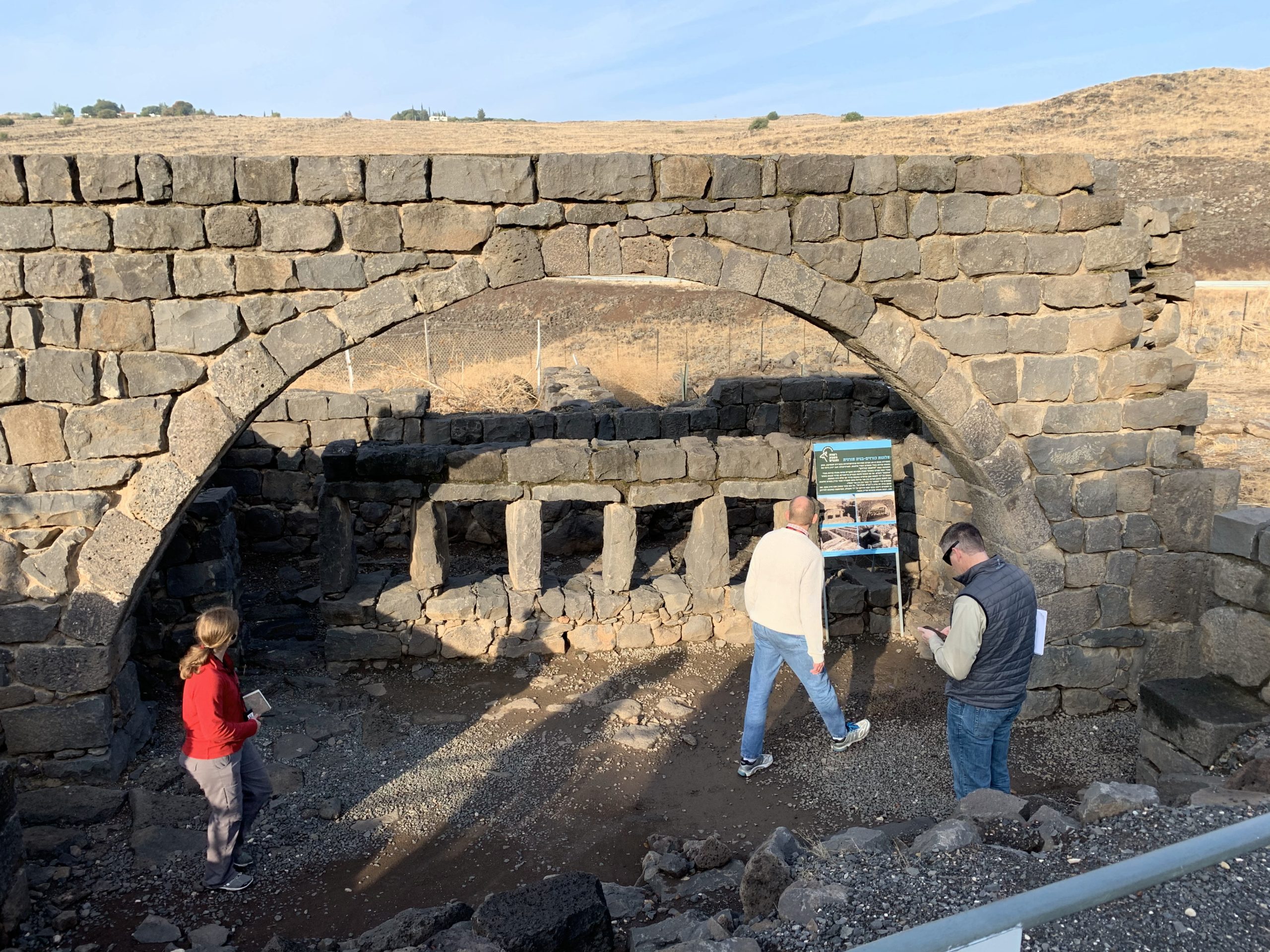
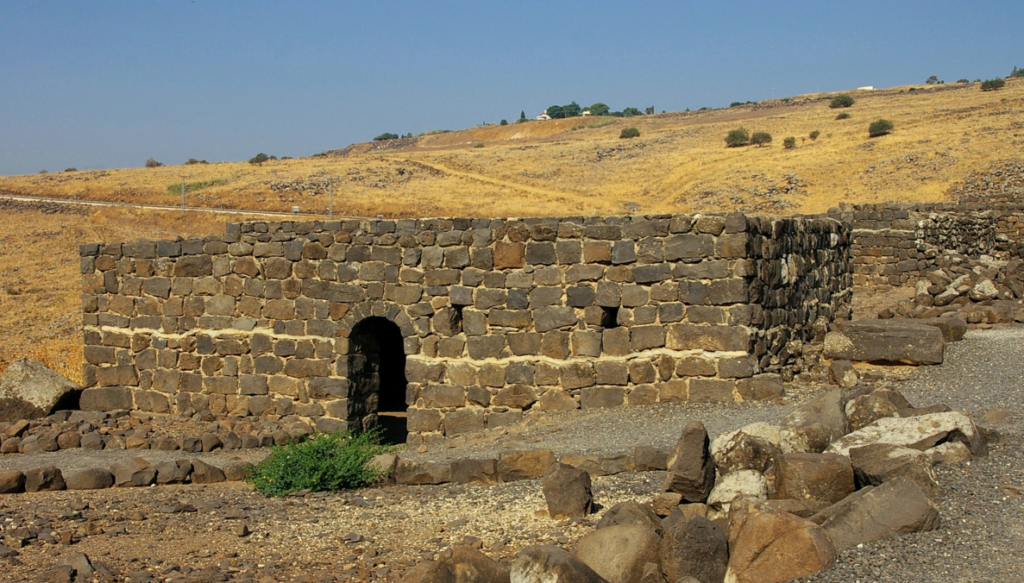
Archaeological Notes
Heinrich Kohl and Carl Watzinger of the Deutsche Orient Gesellschaft identified the ruins of a synagogue at Chorazin during their survey of synagogue ruins in Palestine (1905) and they conducted some excavations there from 1905 until 1907. In 1926 Jacob Ory and Naim Malchouly (the Department of Antiquities of Palestine) cleared some of the architectural remains. Ze’ev Yeivin (Israel Department of Antiquities and Museums) directed excavations at the site (1962–1965, 1982–2000), bringing the synagogue, some houses, and a public building to light.
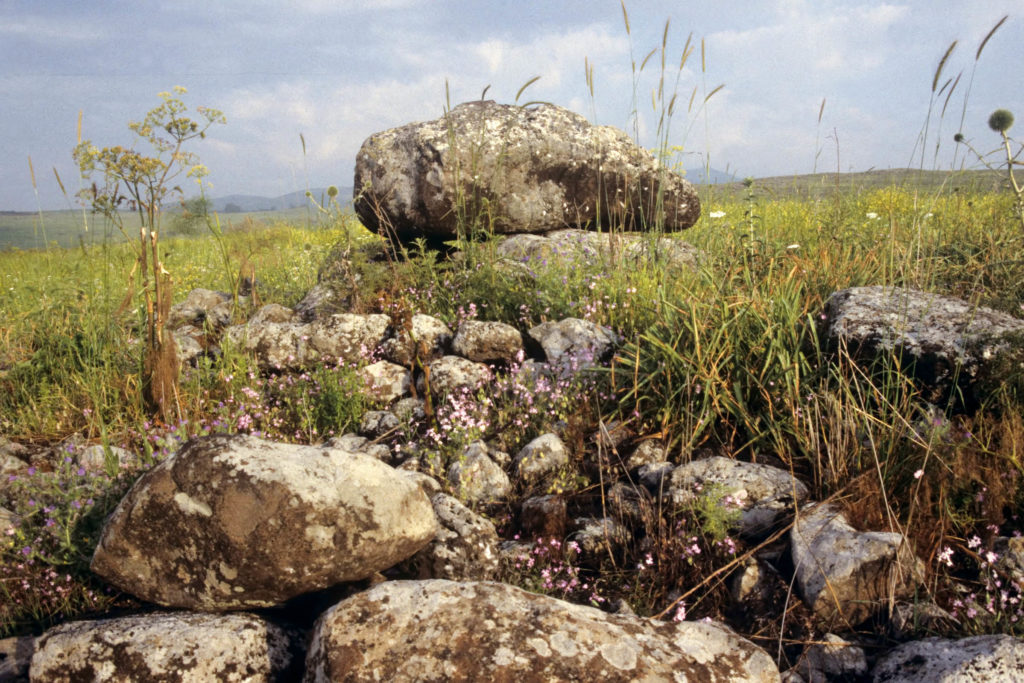
In April 2006 Oren Zingboym conducted a survey south of Moshav Korazim (Israel Antiquities Authority). The team discovered a dolmen field, enclosure sites, Horbat Berekh (dating to the Bronze Age) and Horbat Sur (dating to the Byzantine period). The dolmens are not unusual on the Korazim Plateau and indicate the presence of a number of necropolises on the plateau. For a details regarding a salvage excavation conducted in November 2014 in Khirbet Umm el-Kalḥa, see Yardenna Alexandre’s report available online.
Since 2009, educational excavations have been conducted at Korazim. I. Borodovitz led the excavations 2009–2012. Achia Kohn-Tavor and D. Ben Yosef directed the excavations 2014–2017 (Hebrew Union College and Ariel University).
Until 2020, 1st-century occupational ruins or artifacts had not been discovered with only a small portion of the site’s 80 acres having been excavated. However, one of the most recent “Sergio and Rhoda in Israel” episodes (Sept 2020) includes exciting news of 1st-century ceramics discovered under the large-stone foundation layer beneath the 4th-century synagogue floor.
Synagogue
The 4th-century synagogue at Chorazin is like the one at Capernaum but of black basalt like the walls under the one in Capernaum. Sitting on an elevated platform, the synagogue dominates the town. Its architects and builders used the abundant local black basalt for the construction. The synagogue faces south toward Jerusalem, a common feature for synagogues of that time. Its main hall of measures 65 feet in length and its width 45 feet. Its basalt columns were arranged in three rows — one on each of the east and west sides and one in the back (north) — forming a “U”. The layout consists of a central nave and three aisles identified by the three rows of columns.
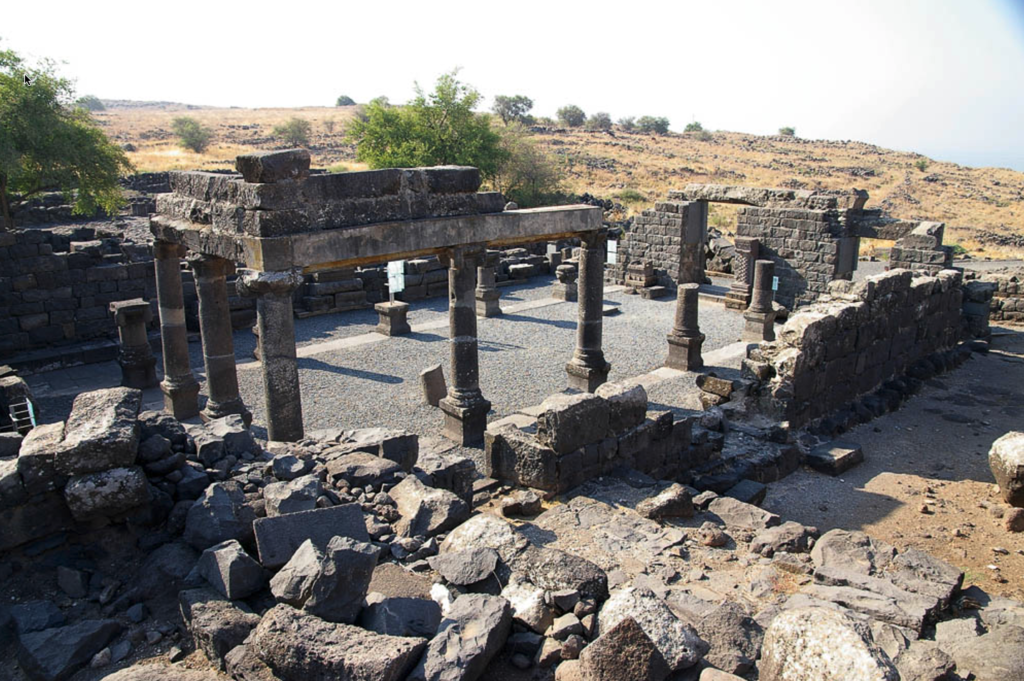
Archaeologists uncovered something unexpected. Yeivin describes the find as follows:
Coins found in the synagogue provide interesting though puzzling dating evidence. When the synagogue was rebuilt in the fifth century, a plaster floor replaced the original stone pavement. Then, perhaps at the end of the fifth century, this plaster pavement was destroyed and filled with earth. In this earth filling over 2,000 coins were found—the earliest, from the end of the fourth century, the latest, from the beginning of the seventh century. Included were two golden coins of Heraclius, dated to 612.
— Zeev Yeivin, “Ancient Chorazin Comes Back to Life,” Biblical Archaeology Review 13, no. 5 (September/October 1987): 35
The late dates for some of the coins indicate they did not comprise a foundation deposit. Smith offers the following explanation (consistent with Yeivin’s own thinking):
The discovery of numerous coins on the floor of the synagogue has been interpreted as indicating that the town was a stop on the journey of Christian pilgrims who came to witness the fulfillment of Jesus’ reproach and who tossed coins into the ruins.
— Robert W. Smith, “Chorazin (Place), in The Anchor Yale Bible Dictionary, ed. by David Noel Freedman (New York: Doubleday, 1992), 1:912
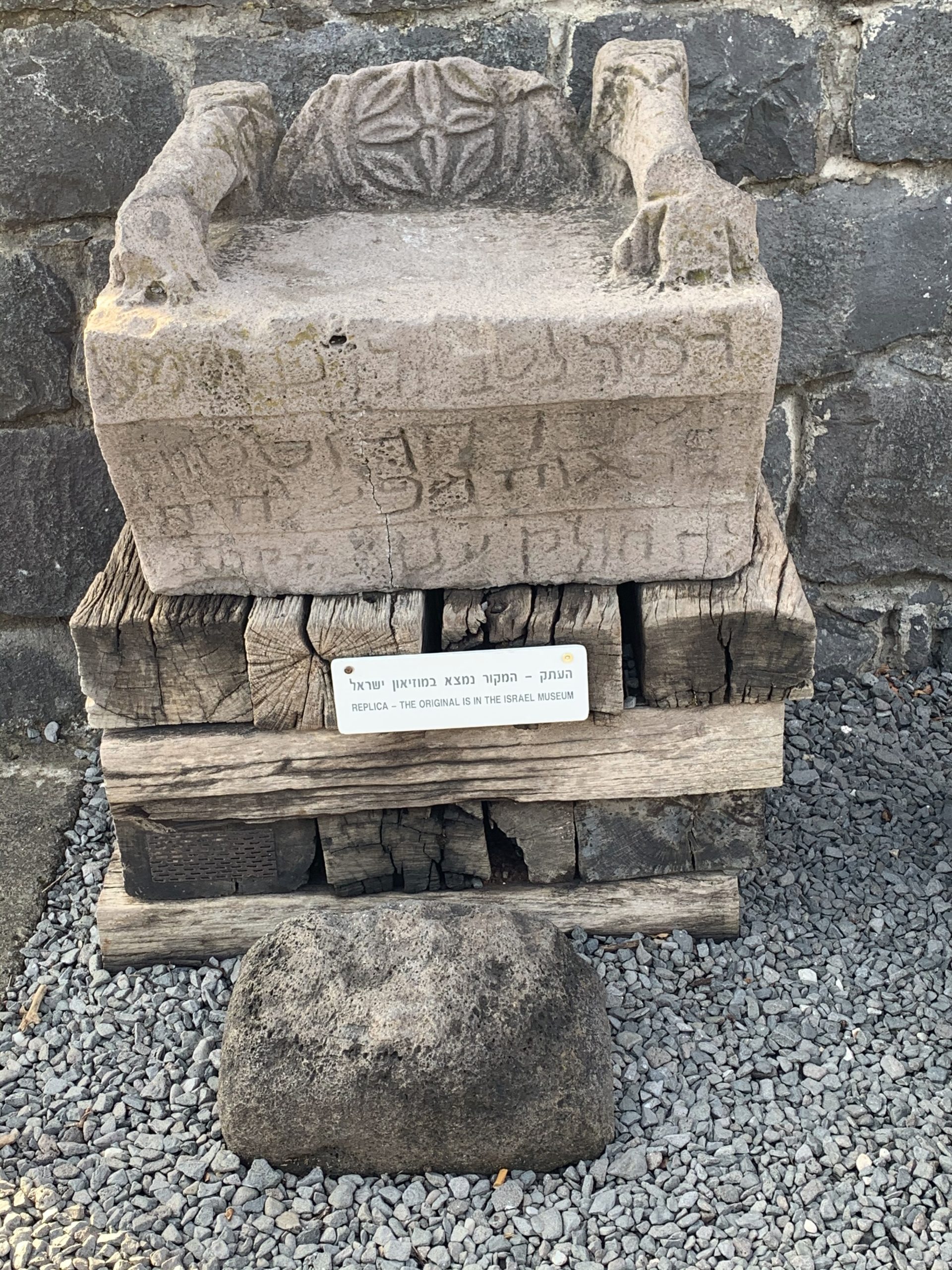
One artifact in particular has gained a good deal of attention since its discovery by Ory in 1926. It is a carved basalt seat where the teacher of Scripture would sit (cp. Luke 4:20 — Jesus read the Scriptures while standing, but sat to teach). It is referred to as “the seat of Moses” (cp. Matthew 23:2, ἡ Μωϋσέως καθέδρα, hē Mōuseōs kathedra). The seat’s back displays a four-petalled rosette inside a circle. It has two decorated chair arms: what appears to be the remnant of an eagle with wings spread and claws (the right chair arm) and what appears to be a lion’s mane on the left. Nothing appears on the rear surface of the seat’s back — indicating, perhaps, that it was attached to a wall. A four-line dedicatory inscription in Aramaic on the front of the seat honors the donor of the chair: “Remembered be for good Judah ben Ishmael who made this stoa and its staircase. As his reward may he have a share with the righteous.” In 1930 Jacob N. Epstein took a different interpretation of the word taken as stoa. Both he and Yeivin believe “stvh refers to the Hebrew or Aramaic word istava which means a shelf, a platform or a small roofed and decorated dais (bema, plural bemot) on which the chair probably rested and from which the scriptures were read or chanted.”[2]
Many fragments of the decorative stone work for the synagogue have been recovered. The depictions demonstrate syncretism with popular Roman and Greek elements.
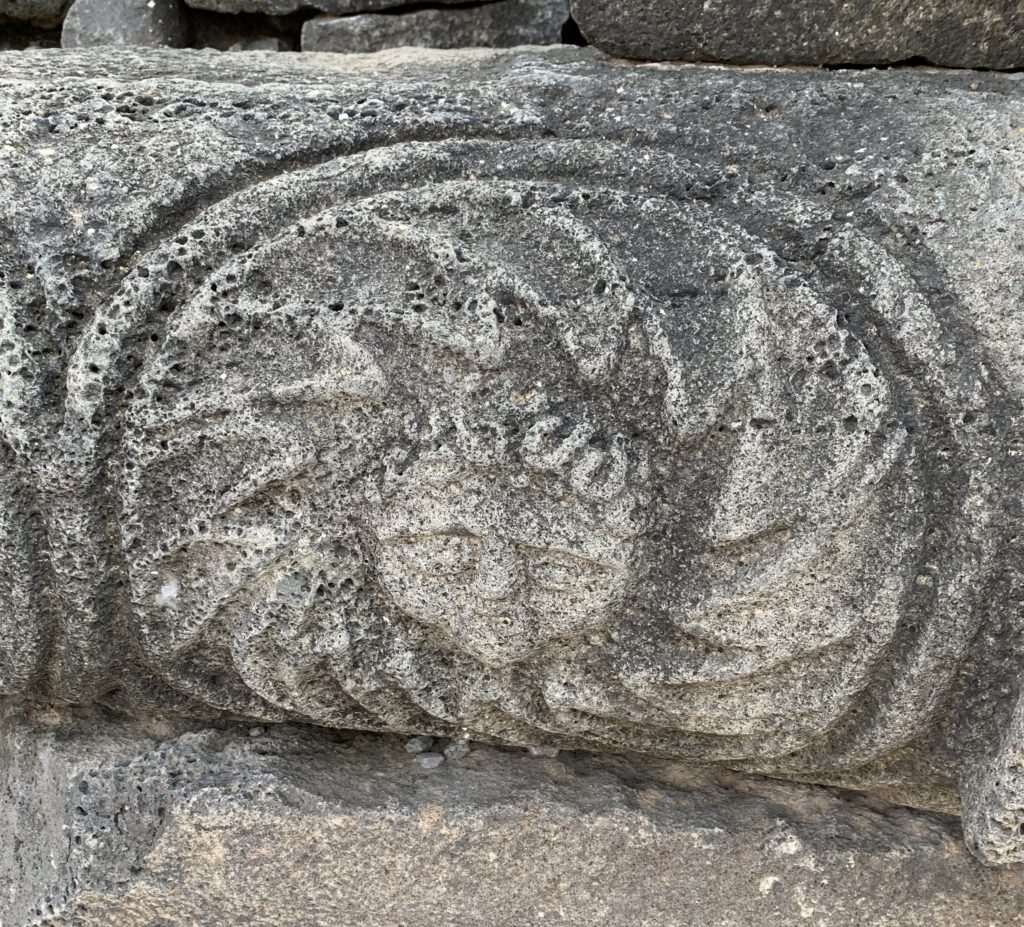
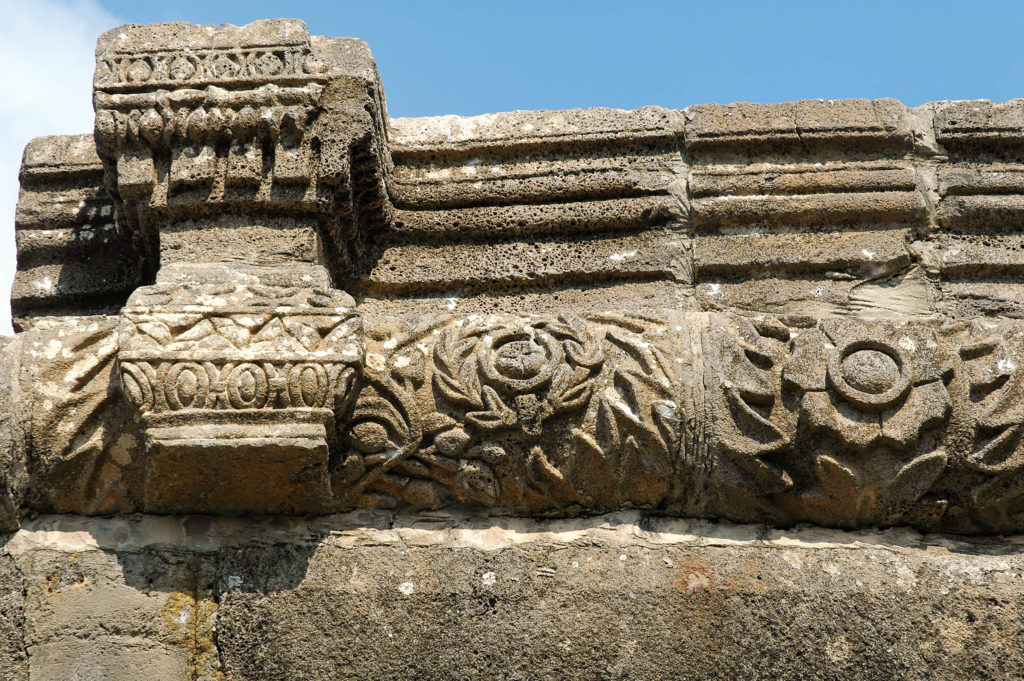
Miscellaneous

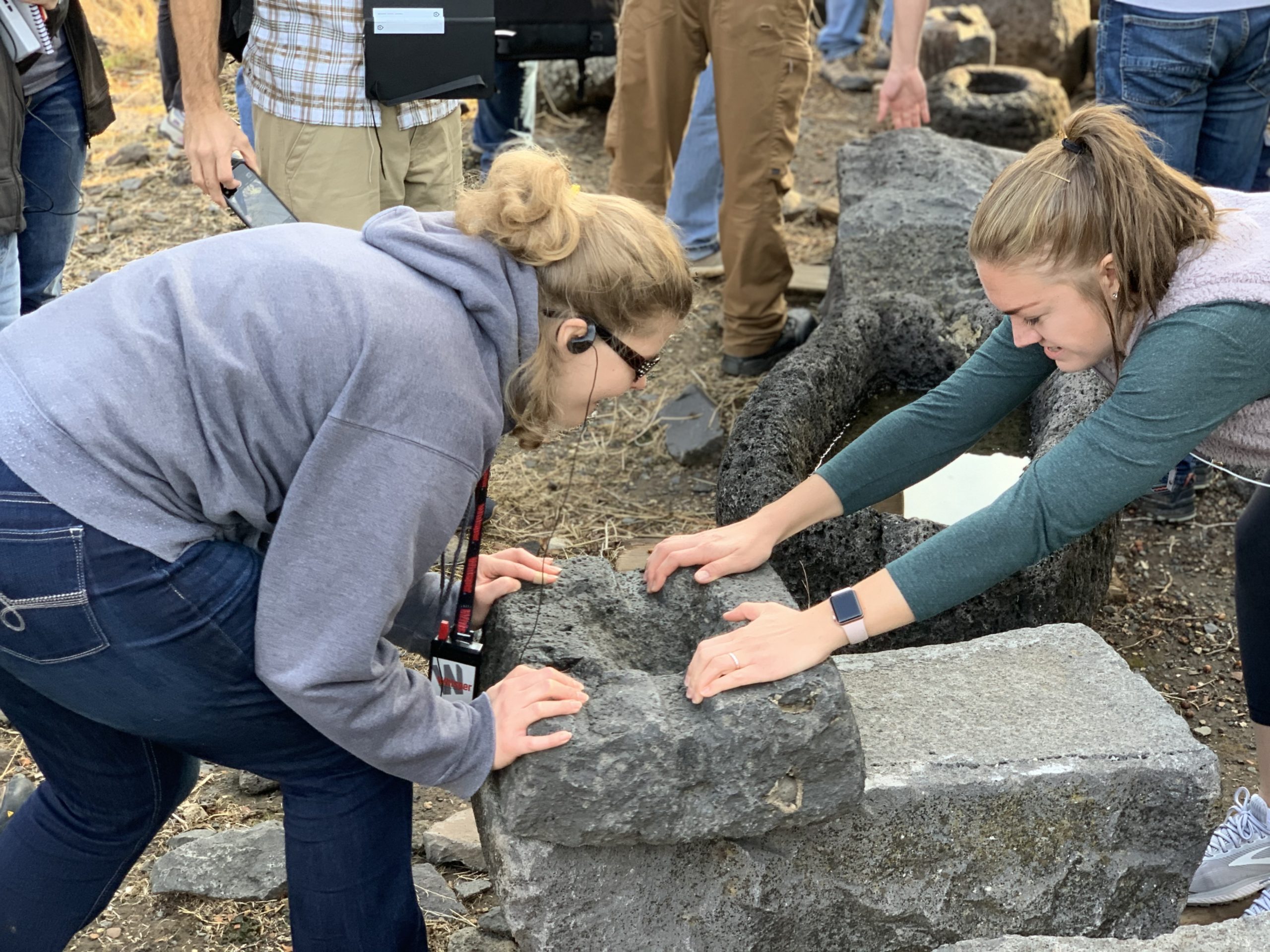
Recommended Resources
- Alexandre, Yardenna. “Korazim, Kh. Umm el-Kalḥa.” Hadashot Arkheologiyot: Excavations and Surveys in Israel 129 (2017). Online e-journal of Israel Antiquities Authority.
- Bornblum, Bert. “Chorazin.” The Bornblum Eretz Israel Synagogues Website, Kinneret College on the Sea of Galilee. [Accessed 30 Nov 2020] — Includes a brief photographic catalog of some of the architectural finds related to the synagogue from the 1916 published report of Kohl and Watzinger, as well as a four drawings from Yeivin (2000).
- Čanády, Alexander. “Observation of the Syrian Rock Hyrax (Procavia capensis syriacus Schreber, 1784) from Tabgha (Israel).” Acta Zoologica Bulgarica 64, no. 1 (2012): 101–2.
- Kohn-Tavor, Achia. “Korazim.” Hadashot Arkheologiyot: Excavations and Surveys in Israel 131 (2019). Online e-journal of Israel Antiquities Authority.
- Sergio and Rhoda. “Lifting the ancient floor of the cursed city of Chorazin.” Sergio and Rhoda in Israel, Season 4, Episode 10. September 29, 2020. Video. [23:01]
- Yeivin, Zeev. “Ancient Chorazin Comes Back to Life.” Biblical Archaeology Review 13, no. 5 (September/October 1987): 22, 24–28, 30–31, 34–36.
-
Zingboym, Oren. “Korazim Junction, Survey.” Hadashot Arkheologiyot: Excavations and Surveys in Israel 120 (2008). Online e-journal of Israel Antiquities Authority.
Footnotes
[1] Jerome Murphy-O’Connor, The Holy Land: An Oxford Archaeological Guide from Earliest Times to 1700, 5th ed. rev. and expanded, Oxford Archaeological Guides, ed. by Barry Cunliffe (Oxford: Oxford University Press, 2008), 257.
[2] Zeev Yeivin, “Ancient Chorazin Comes Back to Life,” Biblical Archaeology Review 13, no. 5 (September/October 1987): 35.

